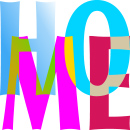
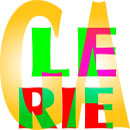
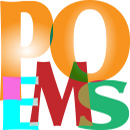
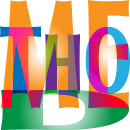
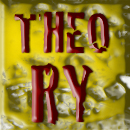
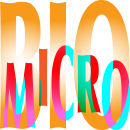

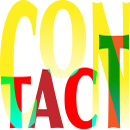



|
Summary of the previous chapter:

|
The conscience, for what?
What would we be if we did not have the conscience?
Robots. What we are seemingly not, since we are the champions of the suitability, creators, inventors, philosophers...
Turn the clock back...
At the beginning, we learned there were very primitive unicellular organisms, with a strictly determined behavior, stereotyped...
Then, climbing the ladder of evolution, more sophisticated animals have appeared.
Not only they had no stereotyped behavior, but they were able to learn, adapt ... This is not already Homo sapiens, neither hominids or whatever...
What is important is to determine the fundamental difference between us, clever mammals, and living robots.
The biological innovation, which can free the individual from the determinisms of the machines, is a couple:
the couple pleasure-pain
"The carrot and the stick" only makes sense for organizations that can feel pain and pleasure.
It is through the conscience that the Unconscious feels pain and pleasure.
The conscience is the pleasuremeter and the painmeter through which the Unconscious strives to ensure (to the extent of its means...) the more pleasure and less pain. |
Who, in a restaurant, confuses the server and the cook? The conscience is a phenomenon essentially passive. Any activity comes from the Unconscious.
If the Unconscious was the Internet (and all its sites and search engines...), the conscience would only be the computer, which allows you to connect and view the we ...
The conscience is the passive witness of external reality through the senses and movements determined by the unconscious through the kinesthetic sensations.
The conscience has never an active role in the movement, thinking, or anything that can be produced by the brain work.
The mission of the Unconscious, we could call it the happiness of consciousness, but in reality, he seeks his own happiness to taste through the conscience.
The conscience experiences the happiness of the Unconscious (and the pain ...) and the effectiveness of plans of the Unconscious. The conscience is thus the test tube where the Unconscious tests its projects.
The conscience is the center of surveillance of the body-house, with all sensors. When comes a lumbago, the Unconscious stops all its activities to try to correct... More pain is pervasive, the more the work of the Unconscious is disrupted, influenced, polluted, by the conscious pain.
If the brain was a vacuum-cleaner, the conscience would be merely a filter sensor at the end of the hose (entry: perceptions of external reality) and output (kinesthetic sensations), and a motion sensor on the wheels and hose. Point.
Once the conscience is functional, the unconscious begins to use it:
Input: all sensations, conscious perceptions, are duly recorded by the Unconscious with the pleasures and pains that conscience has experienced through them.
Naturally, the Unconscious can not register pain and pleasure as he records the sounds, and if he could restore them, as we've felt, we would be real vegetables, happy fools...
No, the unconscious uses a rating system that allows him to retain information in memory, pleasant or painful, and extrapolate from these notes for offering useful suggestions...
Output: the Unconscious sends pleasant or painful thoughts, depending on their internal rating, and conscience experiences a mental pleasure proportional to the score given by the Unconscious.
If the suggestion of action results in a painful situation, the Unconscious will correct downwards the ratings of its sources.
If, however, suggestions of action lead to success, as it was expected, the Unconscious confirms his notes in his database.
The conscience is therefore an ideal channel to learn (because learning without conscience can be only hypothetical or neutral rating), and a valuable intermediate for the difficult activities, because it allows the Unconscious to test continuous relevance of the outputs and the danger (if any) of inputs, from the standpoint of the pleasure of conscience.
Feeling…
If you put your hand on the hood of a stationary vehicle, whose engine is running, you feel the cover that vibrates. If the vehicle is started, you can see and feel it (do not let it roll over your feet, you feel better...). Does this mean that you are the vehicle? No.
When we listen to the radio, our conscience does not suppose that it is the source of what she hears... Our conscience is no more to the origin of thoughts that may cross.
Similarly, conscience allows us to feel our movements, to perceive the outside world through our senses, to feel the warning signs in our body, to collect the thoughts that run through it and, above all, pains and pleasures caused by the outside world on our body and thoughts which come from the Unconscious. |
Movement…
If conscience is not responsible for the movement, you may be wondering how this can be accomplished without any surprises of us ...
In fact, any surprise is a reaction of the Unconscious. So it has no place in the case of movements:
The Unconscious decides the motion, then, through conscience, he feels kinesthetically (and possibly visually) the movement he commanded. Everything is absolutely normal, regular, ordinary and there is no place for surprise.
If, by brain dysfunction, a movement command of the right arm caused an elevation of the left arm, then ... the Unconscious, would demonstrate his surprise, his embarrassment: "But ... what happens to me?"
This reaction is a form of politeness, for oiling the inconsistencies of brain function, to make them less painful, less annoying, since we learned to feel negatively functional disorders of any kind ... especially when they affect mental functioning.
|
See, hear, and understand…
What we consciously see is not the only result of our senses:
If you do not know what a chair, you can not see it! You'll see a shape but it does become
a chair only if the unconscious sends you information related to the shape in question.
The view alone would bring the vision of forms variously distant.
The conscious vision is a vision which incorporates comments of the Unconscious, a version
with continuous commentaries and whose comments are meaningful and scored in terms
of pleasure/pain.
Example: I see a bear running to me in the forest. Vision immediately causes an alarm signal from the Unconscious. Bear = Danger!
It's the same when you listen to the radio: the unconscious engages in a live analysis of auditory perception, and if it is a pleasure to listen of the radio, it is based on comments from the Unconscious, reactions to listening.
In fact, when we hear something, conscience does not understand anything. This is the unconscious that is capable of understanding and analysis and therefore he sends to conscience an indirect production of pleasure or pain in response to perceptions of the outside world.
We can compare conscience to a thermometer, as if pleasures were hot and pains cold. From outside or inside, physical or mental pleasures and pains ...
If we unplug the Unconscious of conscience, the latter will host only perceptions without meaning, but it would not matter, since the only clever spectator of conscience * would not be there anymore to suffer in perceiving the absurdity of conscience.
* The Unconscious, of course. |
The conscience, mirror of the Unconscious, or training wall…
When you comb without being able to look in the mirror, then you will verify the result, when you can, in a mirror.
The Unconscious does the same with conscience. He uses it to verify everything is correct; he checks he did not commit huge mistake of appreciation.
Sending thoughts to conscience allows him to react as if they were outside perceptions.
A thought, sent to consciousness, becomes, as the speech of other people, that would feed a conversation. Except that the Unconscious is alone, and he speaks with himself, for optimum efficiency.
As a tennis player who was training alone against a wall (squash court) to perfect his game before facing real opponents, except that this tennis player has the option, instant, at any time during the game real, to bring out its training wall to test his shots ...
This wall is consciousness.
|
Flaubert
Considered as one of the greatest French writers, why did this man read aloud his works, in what he called the "shouter place", to correct them?
Why did he feel the need to hear them, as if they were the words of another, if not for the better judge, because his ears bring to the Unconscious, through conscience, better concentration and many more sources of a reaction than just a dumb reading !
In silent reading, we are never as attentive as if we read aloud. Especially if we wrote the text ourselves, because the act of reading was mixed, despite ourselves, with the memory that we had, and we're not as good a judge as, if we were rereading the text of somebody else, which requires greater attention to the extent that we discover it as we go.
Flaubert, therefore, was suspicious of himself, his own mental functioning, because he knew from experience that he would ignore any errors or infelicities of style, if he simply did a dumb review. It takes longer, but it's more safe and effective ... |
Driving
When you're behind the driving wheel, the rear of the car ahead of you in traffic is ... neutral.
You drive at a certain speed and the car in front, suddenly, brakes. Automatically, the Unconscious, who watched the scene through the conscience, involved to change the note, and the back of the car slowing down, becomes hazard, factor of (mental) pain, the prospect of an accident, a penalty, etc..
And this entails, from the Unconscious, sudden braking. |
The scoring
Besides the ability to experience pleasure and physical pain, conscience, through scoring, allows the Unconscious to store pleasant or unpleasant events.
In recalling these scored memories, conscience experiences a mental pleasure proportional to the rating she has done and which has been stored.
At conscience, the Unconscious can confront his memories to external reality, or simply to other memories scored differently. This is the phenomenon of reflection.
At conscience, the Unconscious can send suggestions of action, accompanied by pleasure promises commensurate with the rating of memories that were used to manufacture them. The Unconscious takes the opportunity to try them in all aspects he is able to control and he can then react, refine its reasoning, its memorial storage... |
Pleasures, hopes, pains, fears
By their scoring, the memories are a set of negative or positive numbers.
One could imagine neutral memories. For example, "Rome, capital of Italy. " But this kind of information can valorise us, show ourselves as an educated, wise (relatively), and therefore cease to be neutral.
Well! One can imagine that the name of the brother of the sister in law can be regarded as neutral, but it is attached to a set which is not, either pleasant or repellent ...
Pleasures motivate us. Pains dissuade us. Hopes are expected pleasures. Fears are pain in perspective...
Drawn by the first or pushed by the second, the difference is trivial. The overall operation is the same.
We'll see just at the point of view of suicide, lack of pleasure and excess of pain cause the same consequences... |
(To be continued) |
